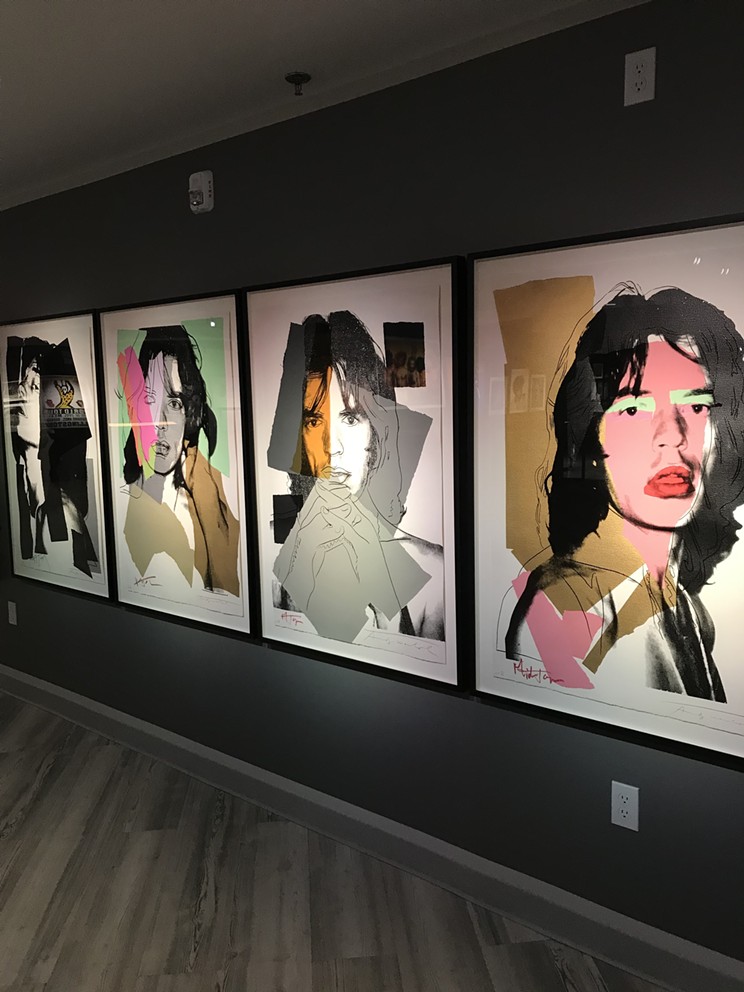Billboards, newspaper headlines and posters plastered in public spaces in 1970s England displayed the nation’s raised hackles through a blistering rhetorical question: “Would you let your daughter marry a Rolling Stone?” The lads were banned from their home country for either drug use or tax evasion (depending who you ask), and were not only rock stars incarnate but the fullest manifestation of what the devil’s music could do.
My own entanglement with problematic baes Mick, Keith, Ronnie and Charlie had long been a secret: I’d only wear my Rolling Stones T-shirts around the house and I’d avoid playing my scuffed-up copies of Tattoo You and Beggars Banquet when friends were around. But it was a different crime that kept our affair under the cover of night. I couldn’t reconcile how a friendship borne out of a shared love of American blues music could end up being not only one of the strongest artistic collaborations of a generation, but also one of its most significant cultural colonizers: Profiting off its own form of sped-up blues as it became the biggest and most enduring rock band in the world—a success never afforded the Black artists who inspired and educated them. (Plus, wait ‘til you check out the lyrics of “Brown Sugar.”)
I didn’t know how to reconcile the artistry with the thievery, and to be honest I still don’t.
They were my dad’s favourite band—and mine too, when I discovered them in high school, independently of him. We bonded through music and in the year since his passing, I sometimes find sitting in The Stones’ music feels like going home in a way I no longer can.
All this was on my mind as I drove to 66 Otter Crescent, a side street in Bayer’s Lake, with Exile on Main Street blaring. I was heading to Steele Wheels, a new space that’s billed as part “exotic car museum” and part live music space created by Rob Steele, Halifax’s answer to Ed Crosswire. The first exhibition to be held in the space is none other than a travelling exhibit on The Rolling Stones, called The Rolling Stones: UNZIPPED, making its final Canadian stop before returning to the UK.
I had no idea what to expect. Recent travelling exhibits that have come to the city have been off-brand productions that relied heavily on creating an atmosphere fit for Facebook (see: the Van Gogh exhibit that felt like being trapped inside a PowerPoint of public domain works by the post-Impressionist master). Walking into The Rolling Stones: UNZIPPED, I knew this was going to be more museum exhibition and less funhouse, thank god. A wall of TVs greets you on entry, with historical footage setting you up with an understanding of the band’s scale, scope and significance. People who don’t know The Stones at all are in for a masterclass crash-course, but what follows also offers enough new info to keep super-fans satiated.
The exhibit is bookended by two immersive rooms that creates a loose narrative structure for the show overall. On the opening end, Mick and Keith present a reconstructed-from-memory version of their first apartment. Viewers walk through the Chelsea, London flat, past overfull ashtrays and empty beer bottles, and by the record player that’s stacked with albums that’d inspire what was to come (like Chuck Berry and Muddy Waters, two examples of artists The Stones would go on to profit from). Such a complete rendering of a band’s beginnings is a rare thing to witness, and this might’ve been my favourite part.
The rest of the show is split into sections. There’s an up-close view of the band’s instruments. Then, a look into how album covers were conceived and created (this part rivals the apartment re-creation for my favourite: Since The Stones collaborated with the likes of Robert Frank and Andy Warhol to create album covers that were artworks in and of themselves, this section is full of preliminary Polaroids and stories). A significant part of the show discusses the band’s live sets, explaining how their interactive, multiple-story-high stages created the modern rock show.
There’s clips from every movie ever made about The Stones, alongside their posters. (Did you know that Jean-Luc Godard, the luminary of French New Wave, made a doc about the band?) Warhol portraits of the band and tour posters from across the decades prelude a recording studio where you get to play producer, mixing hits like “Honky Tonk Women.”
Then there’s the costume section, delivering classic looks from every era of the band, from Charlie Watt’s Savile Row suits to the velvet jumpsuits Mick Jagger wore that would go on to inspire Freddie Mercury. The show’s artifacts were all hand-picked by the band members themselves, and seeing Keith Richards’ thrift store scores next to Jagger’s haute couture (Dior, Prada, L’Wren Scott and the like) proves personal style’s role in rock.
Over and over again in waves, the band’s impact on music as we know it washes over the viewer—while the lack of discussion of their appropriation of Black culture is deafening in its absence. Without The Rolling Stones, arena shows and stage fashion wouldn’t be the opulent excess that came to define a genre. Even beyond music, the greatest artists of their generation—like Warhol and Godard—saw something in The Stones that sparked their creativity. In a world where the word “iconic” gets thrown around constantly, here was an example that actually holds up.
And yet, and yet.
The exhibition closes with an immersive, multi-screen showing of The Stones’ 2016 show in Cuba. As Mick warbles the intro to “Start Me Up,” the journey of four fellas from London hits as hard as the music continues to. I still don’t have any resolution to my problems with the band: The show glosses over these aspects of their legacy. But I also feel less ready than ever to break it off.

